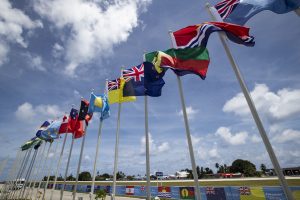As if by some conspiratorial design to cover up the diplomatic rifts, COVID-19 and the unfolding climate crisis have overshadowed the shimmering tectonic fractures caused earlier this year by disputes over the selection of a new secretary general of the Pacific Islands Forum (PIF). The forum consists of 18 countries: Australia, Cook Islands, Federated States of Micronesia, Fiji, French Polynesia, Kiribati, Nauru, New Caledonia, New Zealand, Niue, Palau, Papua New Guinea, Republic of Marshall Islands, Samoa, Solomon Islands, Tonga, Tuvalu, and Vanuatu. The five northern Pacific island states of Federated States of Micronesia, Kiribati, Nauru, Palau and Republic of Marshall Islands (commonly referred to as “Micronesia”) were not happy with the chosen candidate and decided to exit the PIF in protest against what they thought was an unfair selection. This threw Pacific regionalism into political disarray.
More poignantly, it has thrown into serious question the values of Pacific consensus and collective trust, which have framed the normative basis of Pacific regionalism since the organization was set up in 1971.
The breakup of the PIF sits on top of other significant issues such as big power geopolitics, the climate emergency, the ongoing COVID-19 crisis, as well as turmoil in another major regional organization, the University of the South Pacific.
Racialized Subregional Framing Tectonic Shifts?
Pacific regionalism as a post-colonial construction evolved in different ways since the 1970s. The euphoria of independence of the Pacific island states between 1960 and 1980 naturally created the need for a unifying ideology to provide a platform on which they could articulate a common voice and deal with the rigors of global politics, trade, and manage a collective regional agenda. A number of regional organizations were set up. Today there are nine such organizations which make up the Council of Regional Organizations of the Pacific (CROP); along with the PIF, these include the Forum Fisheries Agency, Pacific Aviation Safety Office, Pacific Power Association, Pacific Islands Development Program, Pacific Community, Secretariat of the Pacific Regional Environment Program, South Pacific Tourism Organization, and the University of the South Pacific (USP). While one would think of these organizations as part of a regional family, ironically, there is a certain degree of territoriality and competition over resources and agendas among them as they are often funded by the same donors.
There are also deeper complications that are not often understood, especially how Eurocentric cultural framing has, in subconscious ways, shaped the constructed political terrains in the region.

































